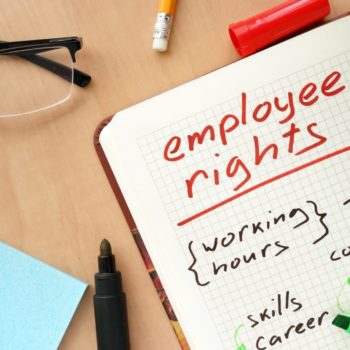Vicarious liability

Regardless of whether or not an employer is aware of harassment carried out by an employee, under Irish law, they may still be held vicariously liable for their staff member’s actions. Here, Caroline McEnery of The HR Suite outlines the steps all employers should take to protect both employees and themselves from the serious ramifications involved
21 April 2016
‘Vicarious liability’ provides that where an employee commits any wrongdoing in the course of their employment, not only may that employee themselves be directly liable for their action, but, their employer may also be held vicariously liable for that employee’s wrongdoing. The principle is commonly applied in incidents where an employee’s negligence leads, for example, to an injury of a customer or third party and the injured party takes action against the employer. The employer can be held vicariously liable for the actions of their employee because the employer is in control of the actions that the employee carries out in the course of their employment.
However, the principle of vicarious liability also applies in instances of harassment in the workplace or in the course of an employee’s employment. An employer can be held vicariously liable for an employee’s harassing behaviour whether or not this behaviour occurs with the employer’s knowledge or approval.
Significant burden on employers
Section 15 (2) of the Employment Equality Acts 1998-2011 states that “anything done for a person as an agent for another person, with the authority (whether express or implied and whether precedent or subsequent) of that other person shall, in any proceedings brought under this act, be treated for the purpose if this act as done also by that person”.
This, of course, can place a significant burden on employers regarding the behaviour of their employees. In a judgement made in the case of ‘Sweeney v Board of Management Balinteer Community School’ ([2011] IECH 131), it was held that although the employer was not aware that the complainant was being bullied and harassed by an employee of the college, the college was still vicariously liable for the wrongful acts of that employee as those acts were committed within the scope of their employment. The court held that the employer was obliged to take reasonable care to prevent the complainant suffering as a result of being bullied or harassed.
Not limited to workplace
It is notable that vicarious liability is not limited to actions carried out within the workplace. In the case of ‘A limited company v one female employee’ (EE10/1998), the equality officer concluded that “within the scope of employment” can include events outside of the workplace. In this particular case the claimant was allegedly harassed by her fellow two employees during a residential company training programme in a hotel. This case established that discrimination may occur outside of the workplace.
A recent UK case, ‘Majrowski v Guy’s and St Thomas’ NHS Trust’ [2006] U.K.H.L. 34, [2006] I.R.L.R. 695, highlighted the potential for an employee to seek redress through the civil courts as opposed to going down the employment equality route. This can substantially increase the potential payout in the case of a successful claim.
Steps all employers should take
The good news for employers is that you can avoid liability if you can demonstrate that you took steps to prevent an incident of harassment and if you can demonstrate that any complaints were dealt with after the incident. Section 15 (3) of the Employment Equality Acts 1998 – 2011 requires employers to “take such steps that are reasonably practical to prevent an employee from doing that act or from doing in the course of their employment, acts of that description”.
The only way for an employer to fully demonstrate that they took steps to prevent such acts is to ensure that they have clear written policies in relation to equality and harassment. These policies should be communicated to employees and signed by both parties to ensure that employees understand the content. It was made clear in the case of ‘Piazza v Clarion Hotel’ (DEC-E2004-033) that employers should have a dedicated policy in relation to equality, bullying and harassment and that they should not rely on a standard grievance policy.
From a practical point of view, the following steps can be followed to ensure that employers are fulfilling their duty to protect employees from harassment:
- Develop a policy on harassment on all of the nine discriminatory grounds covered by the Employment Equality Acts 1998-2011
- Provide a copy of the policy to all existing staff and new staff
- Ensure that all staff are familiar with the contents of the policy. This can be done through training or by asking employees to read fully and then sign-off to agree that they understand the content
- Display copies of the policy in prominent areas such as staff notice boards, locker rooms, canteens etc
- Provide appropriate training to any staff members who have staff management functions. This training should be kept under review in light of developments and best practice in this area
Although the Employment Equality Acts place a heavy burden on employers to protect their employees from harassment, the acts also provide an avenue of defence that can be easily met with the correct policies in place, and an increased awareness of the issue amongst the employees directly involved with managing staff.



 Print
Print




Fans 0
Followers